30
Aug 10
Fall is the perfect time to get back to routine and proper eating if you’ve been ‘out to lunch’ with your nutrition plan. One of the biggest downfalls for many is lunch time, what to have?
By the way…if you need to have accountability, that is, me hanging over your shoulder checking on what you have for lunch and every other meal for 6 weeks to help you meet your fitness and fat loss goals, then check out my transformation program called Shawna 24/7. This program is for action takers only that are serious about meeting their goals.
Here are some tips to help you make the most of your mid-day meal so that you’re energized and feeling great through out the afternoon.
It’s a no-brainer that water should be included in your packed lunch since very function of the human body requires it. Eight glasses a day is a minimum. And for every cup of caffeinated beverage you consume, you should follow it with an extra cup of water.
Empty liquid calories are easily consumed whether it’s in pop, juice or alcohol, so this is an easy place to cut back. Sugar also robs the body of vital nutrients and minerals.
Remember that you may actually be thirsty, not hungry, so always reach for water before you eat and drink wit h your meals and snacks too. It fills your stomach and helps keep you full.
I’m always preaching about consuming protein. It is an essential macro-nutrient that helps in growth and repair of muscle among other things, but one of the other beauties of protein is the stabilizing effect that it has on blood sugar. It helps to satiate the appetite, so that you aren’t hungry 30 minutes after you’ve eaten and you won’t be tempted to reach for carbs and caffeine to get you through mid afternoon.
Healthy protein sources include fish, beans, tofu, nuts, eggs, chicken, turkey, lean pork and lamb.
Variety is the key when it comes to vegetables. Choose an array of colors like orange, red, purple, green, blue, white and yellow to make sure that you’re getting all of the necessary vitamins, minerals and phyto-chemicals.
Don’t save vegetables for dinnertime, you should pack your lunch with lots of colorful vegetables. Here are some great veggie-packing ideas: Fill your sandwiches with baby arugula, roasted peppers and slices of tomato. Pack a container of veggie and whole wheat pasta instead of a sandwich. Put a small container of hummus with cut veggies for dipping. Invest in a small thermos and fill it with vegetable soup.
Fresh fruit is filled with vitamins, nutrients and minerals. Try to ensure a full range of colorful fruit to ensure that you’re getting all the nutrients fresh fruit has to offer.
Avoid canned fruit when possible, or try fruit that is canned in its own juice. Obviously fruit is a better choice than other treats, but remember that due to the higher amount of natural sugars in fruit, it is possible to over eat on fruit. You can get an insulin spike and resulting fat storage with the over consumption of fruit, so stock up on veggies more than fruit.
Whole Grains
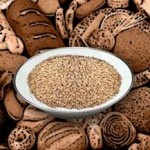 Whole grains are one of the major building blocks of a healthy meal. The key word here is “whole” meaning not refined. Anything ‘white’ should be avoided: white bread, bagels, pasta, rice as there is less nutrients and fiber and they are quickly converted into sugar in the body. As a result, insulin levels also rise and if the energy isn’t used, it’s stored: that means more junk in your trunk.
Whole grains are one of the major building blocks of a healthy meal. The key word here is “whole” meaning not refined. Anything ‘white’ should be avoided: white bread, bagels, pasta, rice as there is less nutrients and fiber and they are quickly converted into sugar in the body. As a result, insulin levels also rise and if the energy isn’t used, it’s stored: that means more junk in your trunk.
Here’s a list of healthy whole grains: oatmeal, brown rice, quinoa, millet, bulgur, whole-wheat or sprouted grain bread, barley, whole grain cereal and whole wheat pasta.
Healthy Fat
 Fats keeps you satiated and are essential for a number of bodily functions.
Fats keeps you satiated and are essential for a number of bodily functions.
Make sure that you top up on Omega 3 fatty acids for its anti-inflammatory properties and proven heart benefits as well as reduced arthritis, memory loss, diabetes and feelings of depression. Things like salmon, flax seeds and walnuts are easy additions to lunch.
Most know to avoid trans-fats, but saturated fats can also be your nemesis especially if you’re prone to high cholesterol. One high saturated fat meal can have an effect on the plague build up in the arteries, so limit your intake.
Of course you need to keep these principals in mind for all meals and snacks in your day, but it’s essential to make the most of the mid-day meal and try to make it larger than the evening meal. You’ll have time to burn off the mid-day calories more so than the late evening ones. As well, remember to have a mid-afternoon snack a few hours after lunch and before dinner so you don’t feel like eating the kitchen sink at dinner time.
Feeding your body six times a day at regular intervals tells your body that food is plentiful and there’s no need to go into fat storage mode. You’ll feel more energy with regular eating and in turn you’ll be able to burn more calories. This starts the ball rolling in the direction that you want.
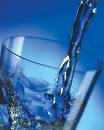


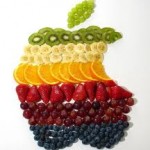
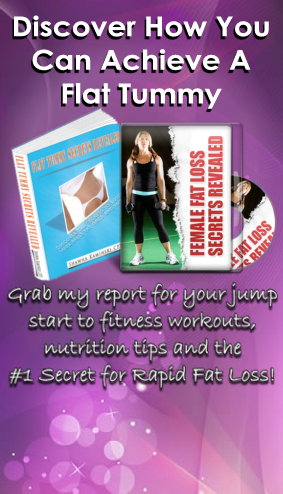

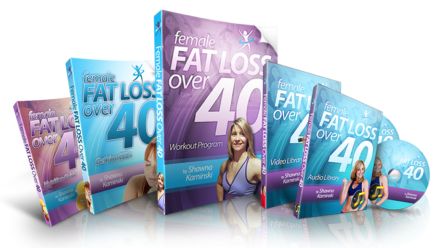

 My passion is teaching people how to work fitness into their daily lifestyle in order to improve their quality of life. Let’s work together to help you reach your fitness goals!
My passion is teaching people how to work fitness into their daily lifestyle in order to improve their quality of life. Let’s work together to help you reach your fitness goals!
Question:
I keep reading mixed messages from people who say that you should be eating every 2 to 3 hours to prevent your body from storing fat and those who say that you should not eat that often so that your body has the opportunity to tap into the fat stores for energy.
Comments?
KJ,
When you feed your body at regular times, it keeps your metabolism moving and tells your body that food is plentiful so that it’s more likely to release the ‘junk in your trunk’ (fat) rather than go into starvation mode. The key is not to over eat at each meal and snack, and choose your foods carefully. You want the most bang for your buck nutritionally with everything that hits your lips.